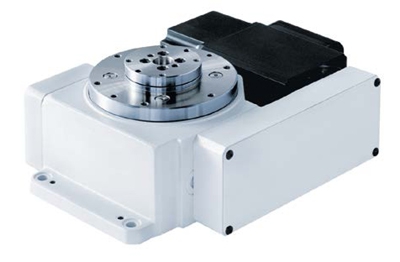
A leading specialist for rotary tables and automation, Weiss North America Inc. has advanced innovative designs for more than 45 years. These innovations have reportedly helped create new, cutting edge solutions to key performance obstacles in the automation industry.
One key production issue is output overloads, or "overload clutches," that have been used for decades to protect the internal mechanics of a rotary index table. Most index tables become vulnerable when a manufacturer specifies a motor that is more powerful than the internal cam followers, cam, and bearings can support. A larger horsepower motor usually requires the use of an external gear box or reducer. The utilization of these mechanical boxes introduces increased maintenance and a larger overall footprint of the table.
To overcome this dilemma, Weiss index tables feature a robust mechanical design that eliminates the need for an output overload clutch. Therefore, Weiss does not offer an overload clutch. Additionally, the tables are designed to withstand an unlimited amount of e-stop and jam occurrences. This is accomplished by not sizing a motor that is more powerful than the table's robust internal mechanical components. If a jam or e-stop occurs, then the motor will stall before any mechanical components can fail. You simply release the brake on the motor and index to the next position after a jam or e-stop condition.
Notably, the combination of robust construction and innovative drive design provides a truly maintenance free solution. All of Weiss' index tables and index rings are shipped filled with oil and sealed for life. Each is also specified with a 25 year life expectancy or more at the given application specifications.
Selecting the correct size index table is ensured by calculating an end user's total inertia load based on proven, pre-engineered "speed steps." A speed step is a combination of the AC Brake Motor, two Timing Pulleys, and a Timing Belt. The maximum inertia and index time has already been calculated for each table and the corresponding inertia loads it can accommodate.
Each speed step has been proven for that specific inertia load on each index table. The AC Motors used are a lower horsepower than would be typical with other similar size index tables. The ability to use a lower horsepower motor is the direct result of an internal gear reduction between the input shaft and the barrel cam. This internal gear reduction is a standard on all Weiss index tables, eliminating the need for any external gear reduction. The resulting benefit achieved is both performance and maintenance driven.
These innovative design advantages provide a cost savings to the equipment builder, as well as a superior warranty to the final user of the machine, according to the company. As a result, Weiss offers a standard four year warranty on all index tables and index rings.
To provide maximum use of components like robots and presses, TR/NR series index rings provide a large open center. This also reduces the overall footprint of the machine with improved accuracy and access to parts. As always, the TR/NR series index rings offer a four year warranty and a lifetime of maintenance free operation.
The TC series index tables offer a very compact, low profile design. The motor-and-belt and pulley housing are always a smaller profile than the table's main casting. This key feature allows a designer to avoid costly cut outs in their machine base plate due to oversized motors and gear reducers.
All of the tables and rings also offer accurate dowel holes on all mounting surfaces including; the main casting for mounting to the machine base, rotating dial plate for easy mounting of the tool plate, and on our standard, center stationary plate on all models. End-users simply transfer Weiss' mounting hole pattern to their tool plate drawing; with no adjustment or reaming of dowel holes required at assembly.
With more than 500 index tables in stock, Weiss is positioned to offer some of the best deliveries in the industry. Global manufacturing capacity has also doubled over the last two years to meet industry products demand.
Custom tool plate, base design, and manufacturing are also readily available from the company's Ohio facility. An aggressive product growth trajectory is anticipated to coincide with the planned 15,000 square foot manufacturing facility expansion by the end of 2014. The addition of new capital equipment will vastly increase in-house capabilities of tool plate machining and machine frame fabrication. Ultimately, it will drive more efficient production, faster turnaround, better pricing, and delivery.
Finally, end users can leverage Weiss Application Software (WAS) to enable simple and intuitive commissioning of the linear motor/direct drive components. The graphic user interface series provides faster set-up and smooth operation, saving customers valuable time and cost.
Contact Details
Related Glossary Terms
- computer-aided manufacturing ( CAM)
computer-aided manufacturing ( CAM)
Use of computers to control machining and manufacturing processes.







